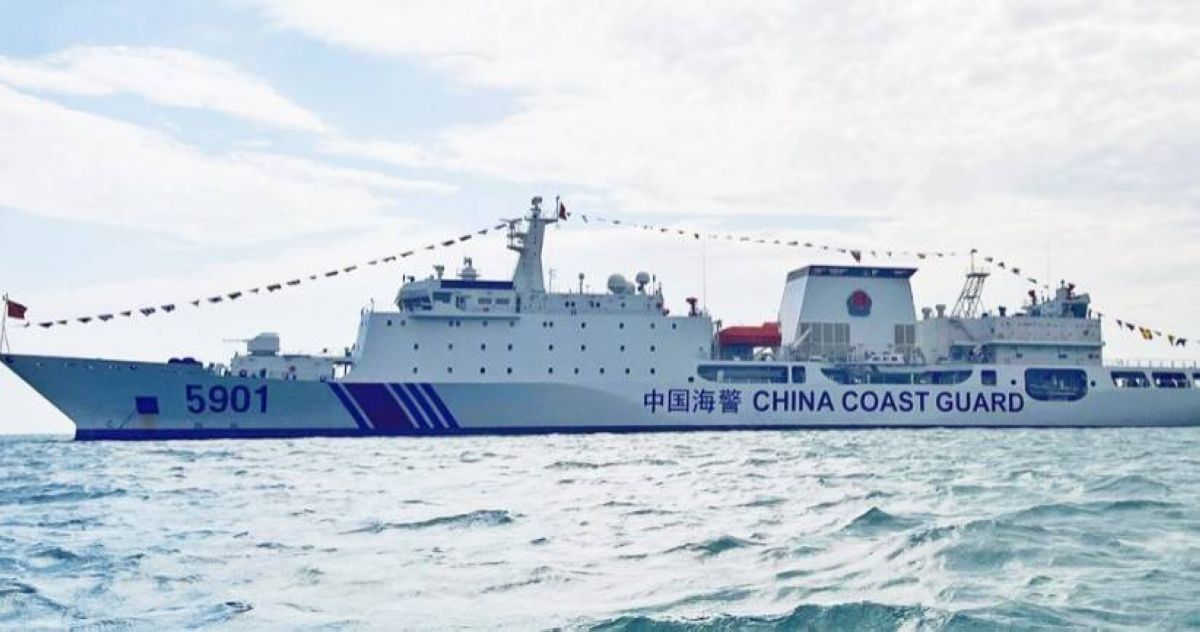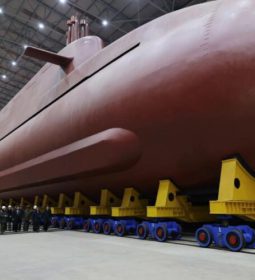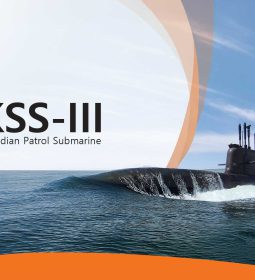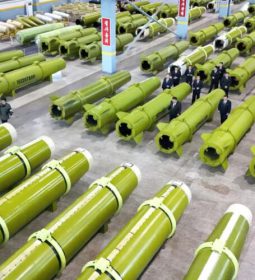Manila and Beijing having “slow and low intensity” sea war in South Asia: whom to blame!?

China anchored one of its two “monster” coast guard ships inside the Philippines’ exclusive economic zone (EEZ) last week in what a Philippine official called an act of “intimidation” in the ongoing territorial dispute between Beijing and Manila in the South China Sea.

Philippine Coast Guard spokesperson Jay Tarriela said the China Coast Guard vessel CCG-5901 anchored near Sabina Shoal in the Spratly Islands, about 80 miles (130 kilometers) northwest of the Philippine island of Palawan on July 3, well within Manila’s 230-mile EEZ.
Displacing 12,000 tons and with a length of 541 feet, CCG-5901 is three times the size of the United States Coast Guard’s main patrol vessels, the National Security Cutters – leading many observers to refer to the Chinese vessel as “The Monster.”
While at Sabina Shoal, the Chinese ship anchored within 800 yards of one of the Philippine Coast Guard’s newest and biggest ships previously deployed to the area, Tarriela said in a post on X.
CCG-5901 is more than five times the size of the Philippine ship, the BRP Teresa Magbanua.
“It’s an intimidation on the part of the China Coast Guard,” Tarriela said during a forum on Saturday, according to a Reuters report.
But he said the Philippines would not back down on its South China Sea claims.
“We’re not going to pull out, and we’re not going to be intimidated,” Tarriela added.
When asked the Philippine claims during a regular press briefing Monday, China’s Ministry of Foreign Affairs denied the area in question was part of the Philippines’ exclusive economic zone.
“China’s military and police ships patrolling and enforcing the law in the waters near Xianbin Jiao are in compliance with China’s domestic law and international law,” spokesperson Lin Jian said, using the Chinese term for the Sabina Shoal.

China claims “indisputable sovereignty” over almost all of the South China Sea, and most of the islands and sandbars within it, including many features that are hundreds of miles from mainland China. Multiple governments, including Manila, hold competing claims.
In 2016, an international tribunal in The Hague ruled in favor of the Philippines in a landmark dispute, which concluded that China has no legal basis to claim historic rights to the bulk of the South China Sea.
But Beijing has ignored the ruling. Instead it has increasingly pushed its maritime territorial claims, with China Coast Guard ships – reinforced by militia boats – involved in multiple clashes over the past year that have damaged Philippine ships and seen Filipino sailors injured by water cannon.
A clash near Second Thomas Shoal in June saw Chinese coast guard officers brandishing an axe and other bladed or pointed tools at Filipino soldiers and slashing their rubber boat. A Filipino soldier lost a thumb during the confrontation.

CCG-5901 wasn’t involved in that incident but has been prowling areas of the Philippines’ EEZ since, according to Ray Powell, a South China Sea expert and director of SeaLight at the Gordian Knot Center for National Security Innovation at Stanford University.
“Immediately following the dramatic standoff at Second Thomas Shoal … The Monster toured nearly every Philippine outpost and key feature in the South China Sea,” Powell said.
Powell and other analysts say intimidation is one of the main jobs of the CCG-5901, which is larger than any regular coast guard ship in the world (a specialty US Coast Guard icebreaker is bigger) and even outsizes US Navy destroyers.
The Arleigh Burke-class destroyers displace 9,700 tons or less and are about 35 feet shorter than CCG-5901.
The US Coast Guard’s National Security Cutters, displace 4,500 tons, a third of the size of CCG-5901.
In a firepower comparison, CCG-5901 also betters the US cutters, with two main 76.2-millimeters guns compared to one main 57-millimeter gun on the US ships.
“Its massive size enables it to intimidate its neighbors while avoiding the escalatory implications of sending a gray-hulled military vessel,” Powell said, referring to navy ships.

Coast guards, known as white-hulled vessels because of their color, are usually assigned to law enforcement and search-and-rescue operations. In most countries, they are not normally expected to participate in military operations.
The US Coast Guard, for instance, is part of the US Department of Homeland Security, not the Defense Department, although US Coast Guard vessels can come under US Navy control in certain scenarios.
The China Coast Guard is part of the country’s People’s Armed Police, which is under the command of the Central Military Commission.
Analysts say that’s a key difference between the two coast guard agencies.
“It is not really intended to carry out traditional coast guard missions, but is primarily used as a central element in China’s paramilitary maritime force,” Powell said of “The Monster.”
Carl Schuster, a former director of operations at the US Pacific Command’s Joint Intelligence Center, said CCG-5901’s size and crew enable it to be a central command ship for a larger operation.
He noted that a Chinese navy aircraft carrier was also operating near the Philippines in recent weeks and that the combination of the two is a coordinated effort to demonstrate overwhelming Chinese naval power to Manila.
China has both the world’s largest navy, in terms of sheer ship numbers, as well as the world’s largest coast guard.

Collin Koh, research fellow at the S. Rajaratnam School of International Studies in Singapore, said “The Monster” shows the Chinese military’s ability for “escalation dominance,” adding that the vessel the Philippines had previously sent to Sabina Shoal, the Teresa Magbanua, was one of its best.
The China Coast Guard “doesn’t want to be outdone thus this monster came along to show who’s got a bigger set of muscles,” Koh said.
- Previous Russia’s Dagestan Ban Full-Face Veil After Attacks
- Next Malaysia wants to join BRICS bloc: Govt conducted detailed study on BRICS membership
















